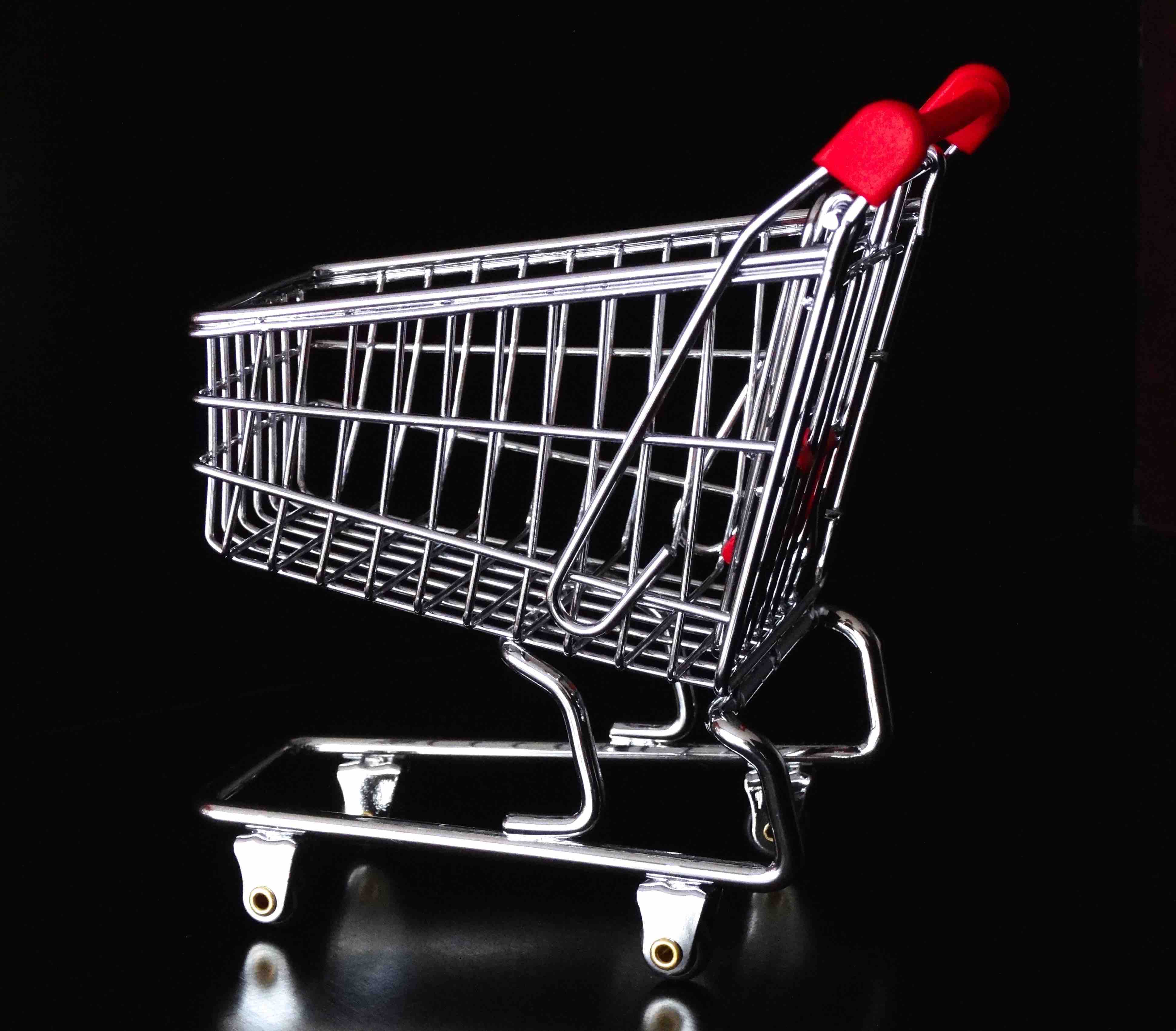
Challenges Facing Brick and Mortar Retail Store Management
The retail brick-and-mortar industry has continued to witness disruptions of seismic proportions in its business operations since the widescale adoption of the Internet in the way businesses are transacted. Shoppers talk about the convenience of online shopping, the competitive prices online shopping offers, the ease of price comparison, online product varieties on offers, one-click access to stores who stock and sell same or similar products and brands, and much more.
Granted all these online shopping advantages, physical brick-and-mortar stores still account for most shopping. Running a successful retail business is a lot more difficult now than it was pre-2007. The retail landscape is littered with dying and dead physical stores. Internet-enabled technology explosion has meant that retail brick-and-mortar store management must adapt or die. Radio Shack, a 94-year old retailer, with an asset base of $1.59 billion, and famously known for its electronic retailing, failed to adequately adapt as shoppers continued to train their gaze at online shopping e-commerce sites. It filed for bankruptcy protection in 2015. Blockbuster, a $1.54 billion asset-based video rental behemoth was totally out-maneuvered by online video streaming retailers like Netflix, and went belly-up in 2010. Borders bookstore chain, with $1.42 billion in assets, failed to respond to the nimbleness of technology-enabled e-book retailing and was easily outflanked by Amazon’s never-ending retail technology-driven serial innovation. It declared Chapter 11 in 2011. These companies and many more paid insufficient attention to the threat posed by the digitization of economic activities, and the cost to their survival was dire.
However, it is not all doom and gloom for physical brick-and-mortar retail enterprises. In an age of business volatility, high-tech Internet-driven uncertainty, where complexity and ambiguity have become the new normal, businesses, especially retail store management must adapt or die. To survive and thrive, brick-and-mortar retail management must address the following challenges:
Coping with E-Commerce Challenge
Worldwide, in 2018, close to 18% of all retail sales were conducted online, with the United States and China leading the pack. However, retail brick-and-mortar stores can still compete effectively with e-commerce stores. To do this, brick-and-mortar retail stores must compete with e-commerce stores in a number of vital areas, without matching e-commerce stores tech-for-tech, though they too must leverage the power and convenience, which technology offers, by doing the following:
Enhance their in-store experience with a web presence: Brick-and-Mortar stores must establish a strong web presence. It is no longer enough and expedient to operate only store formats at only physical locations. In today’s highly wired business environment, customers and consumers alike begin the purchase journey by browsing online for best buys, both in quality and in price, before making a final decision about where and how to buy. Time-pressed shoppers may order online and collect at the physical store location at a time of their choosing.
Brick-and-Mortar Stores must seriously consider adopting an omnichannel retail format: Baby boomers are much more prone to patronizing brick-and-mortar stores than their millennial counterparts. This is an intrinsic buyer behavior for convenience that brick-and-mortar stores should exploit. They must tailor their offerings, taking into considerations the buying behavior of baby boomers' presence for physical stores. Concurrently, they must equally operate online stores to cater to the time-starved millennial consumers who are much more tech-savvy than their parents and older, perhaps less Internet tech-savvy baby boomer generation. With the use of loyalty programs, brick-and-mortar retailers have access to in-store customer data, including email addresses. These email addresses represent a rich treasure trove of data for targeted sales promotion campaigns. (get more materials from my omnichannel textbook)
Consider niche targeting: Like Specialty e-commerce businesses, brick-and-mortar retail businesses must determine if their complimentary online e-commerce sites should focus on specific product offerings, targeted at a narrow market niche. The special advantage of niche marketing is its ability to attract premium prices.
Some examples of niche market formats include:
1. Organic Food and Drinks for the Health Conscious Consumer
Brick-and-Mortar retailers may consider entering the organic food and drink market as an online niche market addition to their brick-and-mortar physical store offerings. More and more organic food purchases are for “at-home” consumption. In this category, fresh produce and dairy products predominate, accounting for almost half of all organic food sales in the United State, going by 2012 figures. According to The Nutrition Business Journal (2013), this is a market niche with a market potential of $60billion in sales in just the United States alone by 2020. The primary driver for organic food and beverage consumption is health concerns. Informed consumers cite their concern about the use of pesticides, growth hormones, and GMO assisted produces as reasons for opting for organic foods and drinks. Some popular organic food and beverage categories include canned beans, fresh tomatoes, fresh milk, pasta, grains and nuts, spices and salads and sandwiches. These products are well suited for an online business model and brick-and-mortar retail management would be wise to complement their physical store formats with e-commerce sites offering this Specialty Produce.
2. Specialty Cosmetics
The cosmetic industry is a vast multibillion-dollar industry dominated by big-box manufacturers like Unilever, Proctor and Gamble, and distributed through multi-chain mass merchandisers like Tesco in the United Kingdom and …in the United States. However, Specialty cosmetic products represent a good fit for small and midsize e-commerce business format for small and midsize brick-and-mortar retail stores. Specialty cosmetic products are for consumers with special needs, who will pay premium prices for products and brands specifically tailored to their needs. Examples include anti-aging cosmetic products, products for men who are hair-greying or already grey-haired, men with balding hair, special hair colorants, organic skin moisturizers, shampoos, conditioners, organic toothpaste, deodorants.
Consumers with special skin and body care products have a higher propensity to the first search for them online. Once they find cosmetic products that meet their needs, they are much more prone to pay premium prices and remain loyal customers.
Total Customer Experience
“There is only one boss. The customer and he can fire everybody in the company from the chairman on down, simply by spending his money somewhere else.”
Sam Watson, the founder of Walmart, the world second largest retailer, is credited with the statement above. Many retail stores say they are customer-focused, or customer-centric but are they? To be customer-focused, or customer-centric, a retail enterprise must address in real time all customer touch-points in a coordinated, holistic manner. Total customer experience begins, even before the customer arrives at the physical store. It includes all elements that encourage the customer to visit a particular physical store. These elements may begin with the store’s website design, layout, ease of navigation, online products, brand assortments, enhanced with appropriate product images, description of features and benefits, pricing, seamless categories listing, store open hours, and accurate directional map to reach your store. The holistic website experience of the prospective customer experience must encourage and not inhibit a customer’s to visit, or else the customer (sales) is lost for good.
Total customer experience then continues when your prospective customer arrives at your physical store. This is where the rubber meets the road. Your customer’s website experience must match the physical store impression. There must be adequate parking space. The storefront must be inviting from the outside in, thus welcoming your prospective customers to take the next step into your store. Window display must creatively showcase items that entice and invite. Window display might be your opportunity to draw the attention of your customers to your products on promotion. For fashion retailers, this is where the latest designs are showcased in their varieties and colors. However, window display must adhere to the best-in-class designs. Store entrance must not be cluttered. There must be adequate shop floor sales personnel, who must be trained on proper customer interactions. Aisles must be spacious enough that customers do not bump into one another. Gondolas must be well arranged, with the heavier items at the lower shelves and the lighter items at the middle or upper shelves. The fundamental principles of category management must be strictly adhered to. Opportunities for cross-selling and up-selling must be exploited. Impulse-buying items must be strategically placed. Overall, the principles of store design, layouts and displays must be adhered to.
Retail store management must pay attention to elements that have the capacity to inhibit or turn-off customers. Floors must be unstained. Odors that offend must be immediately eliminated. Shopping carts must be played strategically at the entrance of the store. They must include wheeled carts, hand-held carts, and baskets. Handwritten signs and price tags must be discouraged and professionally written. There must be adequate lighting. Directional signages help shoppers navigate more seamlessly. Where music is employed, it must not be so loud as to irritate shoppers. Retail store management must experiment with different types of music. Some studies show that classical music invokes emotions of nostalgia, while metal music irritates older customers. Music must be religion-neutral. There must be sufficient checkout counters to minimize checkout queues.
Competing on Analytics
Retail brick-and-mortar store management generates tons of customer data. Enterprise Resource Planning (ERP) software, Customer Relationship Management (CRM) software, Customer Loyalty Cards, and programs, credit cards, and cash purchases provide retail brick-and-mortar stores with an inordinate amount of raw data. The paradox is that many small and midsize retailers are challenged on how best to mine and extract insights from the data they possess. Retail brick-and-mortar stores traditionally use revenue or sales data to prepare periodic profit and Loss (P&L) accounts and Balance Sheet Statements. However, these are forms of historic or elementary descriptive data analytics. To optimize inventory management, minimize stock holding cost, institute Just-in-Time (JIT) re-stocking, optimize logistics, extract customer insight from customer buying behavior, retail store management must step up to plate by acquiring the predictive data analytics business intelligence capability. Predictive analytics is today the golden standard for competing on facts while minimizing intuitive decision making, which can be completely off the mark.
There are a couple of tools retail store management can use for better data mining and drilling down to gain superior business intelligence. The easiest and cheapest is the use of Spreadsheets for data-driven mining and predictive marketing.
Enhanced Customer Insight: With predictive analytic capability, retail store management gains superior insight and can, therefore, design better offers targeted at a retailer’s customers. Intuitive prediction is fraught with imprecision and can be totally off the mark. It fails to avail an organization with requisite knowledge about its customers and their preferences. But big data processed using machine learning software affords a retailer with a piece of much more precise knowledge and insight for targeted marketing, predictive stock purchases, the capture real-time customer information, experience and buying behavior, all using a desktop, laptop, or tablet.
Quality Data in Real Time: The quality of customer data retail management receives in real time is of more value than the quantity of data it collects. Predictive analytics is the tool for addressing the question of what to look for, how to look for it, when and where to look in real time for smarter decision making in a highly competitive and volatile retail store marketing industry
Crafting Precision Advertising Campaigns: John Wanamaker, the late department store management guru is quoted as haven said:
“Half the money I spend on advertising is wasted; the trouble is, I don’t know which half.”
With predictive analytics, retail store management can craft much more precise, relevant advertising campaign targeted at the right audience. An advertising campaign can be tracked to determine its effectiveness. The information gathered from a previous advertising campaign can be used to craft more effective content for future campaigns. By knowing the demographics and psychographics a retail store’s campaign, retail management can better determine the buying behavior of its customers. This will reduce wasted advertisement spend on campaigns and increase the Return on Investment (ROI) on subsequent campaigns.



